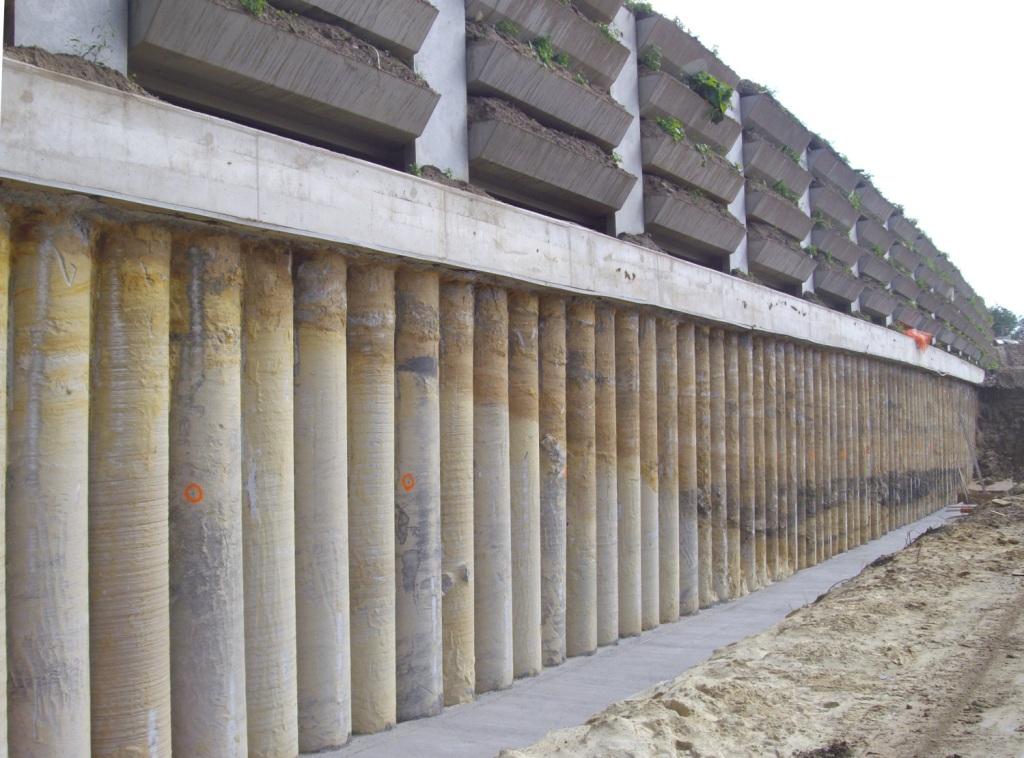
What Is Contiguous Piling?
Basically, Contiguous Piling is a system of construction, using piles to support the building foundation. There are advantages and disadvantages to this system, so it's important to know all the facts before making a decision. Visit WHAT IS CONTIGUOUS PILING to read more.
Construction process
Compared to other soil supporting systems, contiguous piling is a more cost effective solution. Contiguous piling can be constructed in a variety of soils, ranging from soft to hard. It is also faster than other retaining wall methods, and requires less excavation.
Contiguous pile walls are often used to build earth retaining structures in the urban environment. The space between the piles can be grouted to create a watertight wall. It is also useful for underground utilities and footings. This method of construction is especially suitable for sites where groundwater ingress is not an issue.
The construction process for contiguous pile walls is quite similar to that of soldier pile walls. Wooden pegs are used to outline the gap between the piles. These can be inserted before the concrete is poured. This helps keep the noise to a minimum.
A temporary steel casing is usually installed before the concrete is poured. This can be removed after completion of the piling job.
Piles used
Generally, contiguous piling is the use of piles placed close together. This technique is ideal for building up in confined spaces, or for supporting excavation. It is also good for embedded retaining walls. But it is not suitable for granular soils.
Another type of contiguous piling is the secant pile. It is also called a one-pile diameter apart pile. These piles are installed so that they almost touch. They are often used in a residential area or in a commercial property. This method is cheaper than other forms of piling.
These are usually constructed with gaps between them of 50 to 150mm. They are good for urban areas and are economical for structural loads. These also have low vibration and noise. They can be constructed in a variety of soil conditions.
In addition, contiguous bored piles are great for construction in difficult ground. They can be constructed to depths of up to 36 metres. They are typically used in conjunction with other methods of piling. They are particularly suitable for dense urban populations.
Groundwater ingress issues
Whether you are a construction engineer or a layperson looking to buy a new house, the following list of groundwater ingress best practices can save you the embarrassment of having to call in a jack of all trades to fix your mess. In addition, the above groundwater-related checklist can be easily assembled on site, or on a budget. The above list includes both macro and micro water ingress, the biggest pitfalls to avoid, and ways to mitigate the risk. The latter involves both practical and technical measures, from removing the dreaded rat suckers to a thorough evaluation of the surrounding soils.
The above mentioned list is a great reference guide to check out before embarking on your next big project. The above mentioned items include the best way to detect and remediate groundwater ingress, an appreciation of the unique properties of your site and its associated groundwater, and an understanding of the various risks involved in building a home or business in general.
Disadvantages
Despite its benefits, contiguous memory allocation has some disadvantages. These include overhead, inflexibility and fragmentation. It also requires the operating system to keep track of the amount of memory available for other processes. When a process runs out of memory, it will be terminated with a message stating that there is not enough space for the process to run. On the other hand, non-contiguous memory allocation breaks the process into numerous blocks and stores it in different memory address regions. The process then requires address translation, which adds overhead and reduces performance. This method is also slower in execution.
On the other hand, contiguous memory allocation is faster and eliminates the need to maintain a list of available blocks. It is also easier to set up and performs well. The operating system keeps a table of available partitions, and allocates memory space to the process based on this table. It can also reuse spare space.
Comments on “Contiguous Piling”